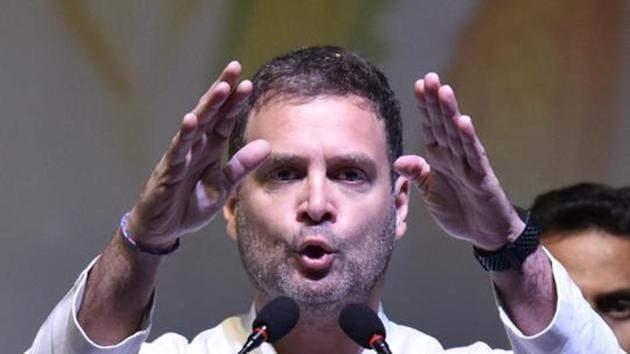Lok Sabha elections 2019: Who would benefit from Congress’s income guarantee scheme?
The Congress has announced more details about the minimum income guarantee scheme that it promises to implement if voted to power. The scheme assures an annual income of ₹72,000 for the poorest 20% of Indian households.
The Congress has announced more details about the minimum income guarantee scheme that it promises to implement if voted to power. The scheme assures an annual income of ₹72,000 for the poorest 20% of Indian households. Not many details on how these households will be identified have been provided. India does not have a comprehensive income database at the individual or household level. The 2011 Socio-Economic Caste Census (SECC) collected data on the highest earning member in a household in rural areas. The answer was recorded in three categories -- less than ₹5,000, between ₹5,000 and ₹10,000, and above ₹10,000. Since unit level data from the SECC has not been released to the public, it is not possible to identify the income of the bottom 20% of rural households in the country.

Three-fourths of rural households (or 133.9 million) reported that the monthly income of their highest earning members was less than ₹5,000 per month. Only 8% (or 14.8 million households) reported income of more than ₹10,000 for the highest member.
It need not be that the entire 133.9 million households would automatically qualify for the minimum income guarantee for two reasons.

First, the average daily wages of a male field labourer grew at 10.17% between December 2011 and December 2018, the latest year for which data was available from the Reserve Bank of India. Assuming that wage growth was evenly spread out, the revised cut-off of ₹5,000 —when SECC data was collected in 2011 — would be ₹9,850 in December 2018. Congress leaders claimed they want to ensure an assured monthly income of ₹12,000 per household.
Second, poor households have higher proportion of double- income earners. A household survey by People Research on India’s Consumer Economy (PRICE), a not-for-profit research centre, on India’s Citizen Environment & Consumer Economy showed that four out of 10 households have multiple earners, and that the number is much higher in under-developed rural areas. This could lower the amount required to bring a household’s monthly income to the level of ₹12,000 per month.

While existing databases are of little use in identifying households or the amount of income support required for bringing their incomes to ₹12,000 per month, they do tell us an important fact. There could be a large state-wise variation in the number of beneficiaries of any such income transfer scheme. Based on SECC data, two southern states -- Tamil Nadu and Andhra Pradesh (including Telangana) -- had more households whose highest earning member had income of less than ₹5,000. Excluding union territories, Delhi, Goa, Himachal Pradesh, Jammu & Kashmir and Punjab had the highest percentage of rural households whose highest earning member reported monthly income of more than ₹10,000 per month.
(howindialives.com is a database and search engine for public data)






